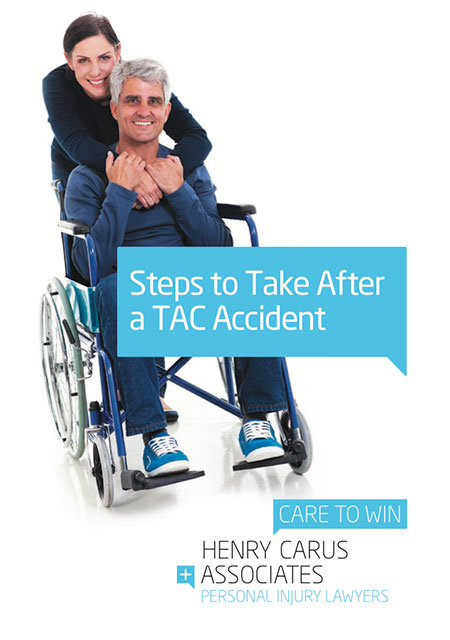
The circumstances around an accident can often be complicated. Whether it be in a motor vehicle accident, during work or in a public place there are usually a number of factors that combine to end up with someone suffering an injury.
In the world of compensation, to be able to access common law damages (damages for pain and suffering and often loss of earnings) you need to demonstrate that your serious or significant injury was caused, at least in part, by someone else’s negligence.
Consider the following examples:
- 1. A passenger in a motor vehicle who is injured when another vehicle runs through a stop sign and hits the car they are in.
- 2. A worker who sustains a back injury while lifting a large box at work.
- 3. A shopper at a supermarket who slips on a wet substance as they are walking around and fractures dislocates their shoulder.
At first glance, each of these examples seems to show fairly clearly that there was fault on the part of another person in causing the injury.
However, then take each of these examples and add some additional features:
- 1. The passenger was not wearing a seatbelt.
- 2. The worker had been told on several occasions and been given specific training to not lift large boxes without another staff member or equipment.
- 3. The wet substance had been identified by staff and a sign had been put up warning of the hazard which the injured person ignored and walked through.
The additional features do not take away from the original negligence that caused the accident/accident/hazard, however it does raise the point of figuring out who is to blame and to what extent.
Arguments by the Defendant to Reduce their Negligence
A common argument made by Defendants in personal injury claims is that the Plaintiff has failed to take care of their own safety or has added to their own risk of injury in some way. The assertion of contributory negligence may or may not have merit and if it does, it will go to reduce the percentage by which a Defendant is responsible. So, for example, if the Defendant is at fault, and the Plaintiff if found to have contributed 30% to the accident, the Defendant will only have to pay 70% of the value of the claim.
What is important is for the injured person to be made aware of the likelihood of the claim being raised, so that he or she can start to think about whether it has merit in the overall circumstances of a claim.
The first example was where the injured person was a passenger the accident was caused by the driver of another vehicle. Normally the driver of the other vehicle would be 100% at fault and no discount would apply. However, when the injured person failed to look after their own safety by wearing a seatbelt one may accept a jury could attribute some fault to the person injured. The key issues that can arise in this situation include whether the injured person had any acceptable reason not to have the seat belt ( example, the driver just asked him or her to reach back and get something from the back seat ) or whether the injured suffered would have been any different if the seatbelt had been worn ( example, the car strikes a tree sideways on the passenger’s side, and as such the seat belt would not have stopped the passenger from striking his or head against the side window ). So the whole picture has to be looked at carefully, and no simply conclusion should be reached. What can be quickly accepted is the error, that is not wearing a seatbelt, opens the accident up for discussion as to whether the passenger should or should not be held partially at fault for the injuries suffered.
Similar issues are raised with the other 2 examples given above, and all of which lead an experienced personal injury lawyer to ask many questions, investigate all aspects, and settle on what is likely to happen when all is presented to a jury.
Only a firm with years of experience with trials in front of a jury can manage such matters with strength and advice a client appropriately.
 Call Us Today
Call Us Today



